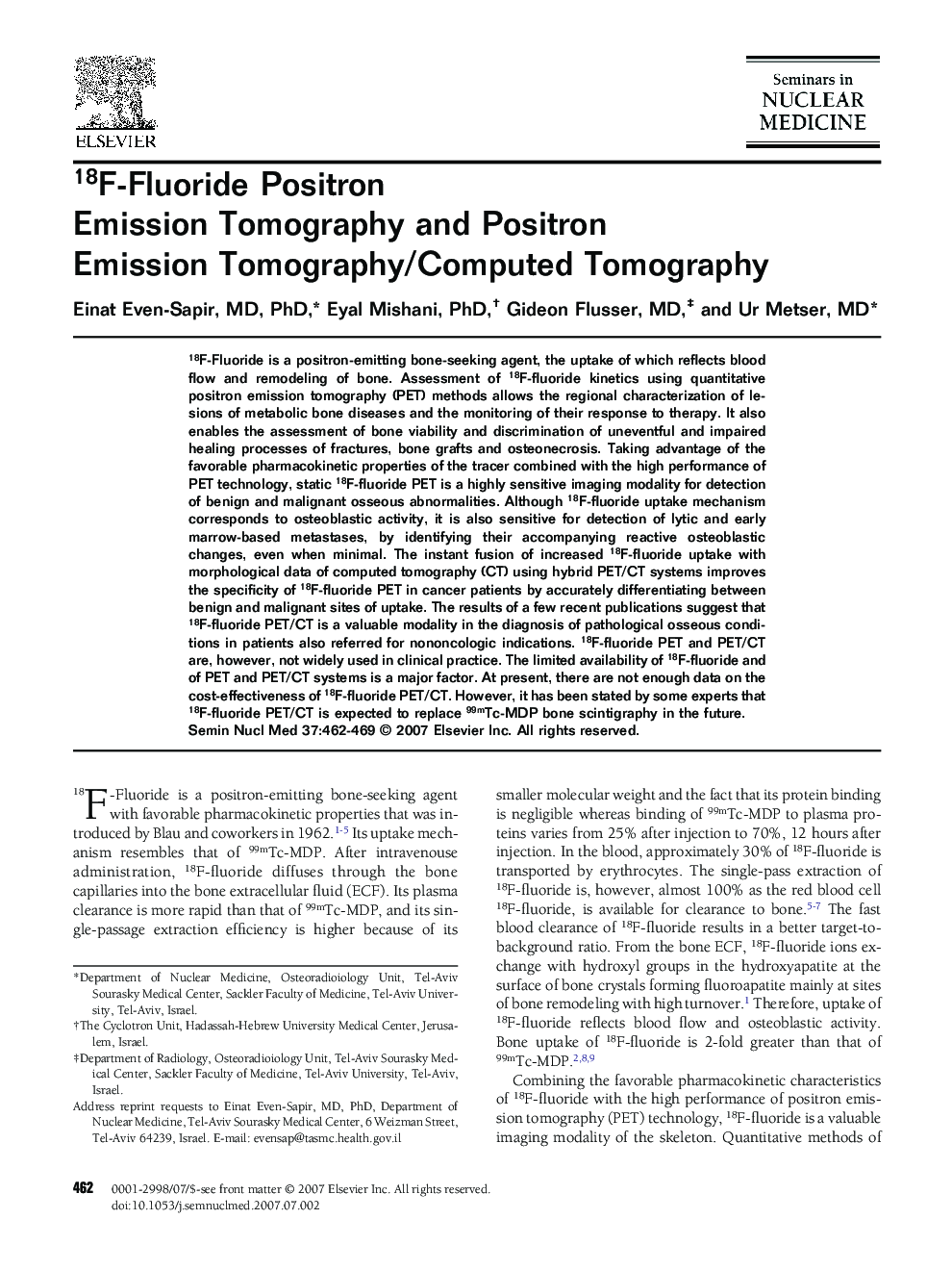| Article ID | Journal | Published Year | Pages | File Type |
|---|---|---|---|---|
| 4251275 | Seminars in Nuclear Medicine | 2007 | 8 Pages |
18F-Fluoride is a positron-emitting bone-seeking agent, the uptake of which reflects blood flow and remodeling of bone. Assessment of 18F-fluoride kinetics using quantitative positron emission tomography (PET) methods allows the regional characterization of lesions of metabolic bone diseases and the monitoring of their response to therapy. It also enables the assessment of bone viability and discrimination of uneventful and impaired healing processes of fractures, bone grafts and osteonecrosis. Taking advantage of the favorable pharmacokinetic properties of the tracer combined with the high performance of PET technology, static 18F-fluoride PET is a highly sensitive imaging modality for detection of benign and malignant osseous abnormalities. Although 18F-fluoride uptake mechanism corresponds to osteoblastic activity, it is also sensitive for detection of lytic and early marrow-based metastases, by identifying their accompanying reactive osteoblastic changes, even when minimal. The instant fusion of increased 18F-fluoride uptake with morphological data of computed tomography (CT) using hybrid PET/CT systems improves the specificity of 18F-fluoride PET in cancer patients by accurately differentiating between benign and malignant sites of uptake. The results of a few recent publications suggest that 18F-fluoride PET/CT is a valuable modality in the diagnosis of pathological osseous conditions in patients also referred for nononcologic indications. 18F-fluoride PET and PET/CT are, however, not widely used in clinical practice. The limited availability of 18F-fluoride and of PET and PET/CT systems is a major factor. At present, there are not enough data on the cost-effectiveness of 18F-fluoride PET/CT. However, it has been stated by some experts that 18F-fluoride PET/CT is expected to replace 99mTc-MDP bone scintigraphy in the future.
